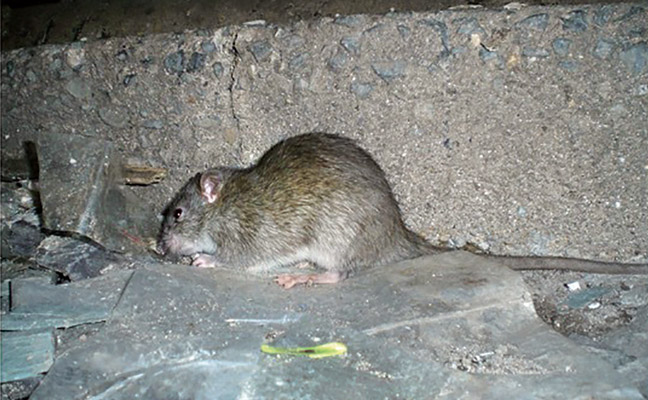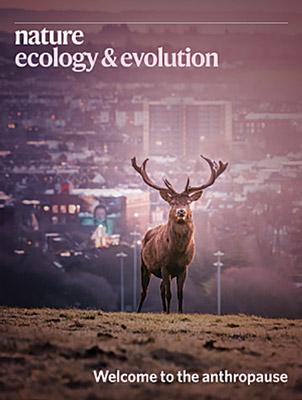
This street rat was totally unfazed by Dr. Bobby Corrigan’s slow, very close approach with his camera. He notes that their disorientation and stress to find food caused nearby pedestrians to misperceive rats as acting “aggressive and brazen” toward humans. PHOTO: DR. BOBBY CORRIGAN
Cities around the world have undergone dramatic changes in human behavior this year, thanks to the COVID-19 pandemic leading to the shelter-in-place dynamic and commercial store/restaurant closings associated with the anthropause. (Author’s Note: See the end for more on this term.)
For decades — and for some port cities of the world, for centuries — city rats have depended on human food, trash and litter for their meals. So of course, the anthropause has caused rats to have to also adjust their behaviors accordingly, to find a dependable source of food.
This has caused rodents, particularly Norway rats (Rattus norvegicus) but also roof rats (R. rattus) and house mice (Mus musculus), to forage at times they normally do not. Now they are “taking chances” relative to predators such as people, dogs and hawks. If food is not easily found, rat population dispersal and/or in-fighting and cannibalization is common.
NEW PLACES, NEW FACES
It is important to note that it is not a case of more rats occurring during this pandemic. Neither is it on a broader scale. Rather, it is about more rat sightings occurring in certain areas of each city — places where, previous to the pandemic shutdown, rats already were present, but not noticed because of their cryptic behavior.
Rats are experts at remaining “unseen” most of the time because of three basic factors:
- They are active at night.
- They are the color of the ground and “shadows.”
- Their bodies are low to the ground, allowing them to scurry quickly from one shadow to the next.
Hungry rats, however, do not have the behavioral luxury of being cryptic. They must find food whenever they can find it — nighttime, daytime, regardless of whether their enemies are about. As the axiom about mammals goes: “Foraging can be costly.”
All of this has resulted in many city-dwelling residents misperceiving the pandemic as being responsible for “more rats everywhere.” After all, rats and disease go hand-in-hand, right? And while it may be true that rodents can spread myriad health issues from which our industry is protecting the public, current research points to coronavirus not being one of them.
Rather than spreading the virus, rats are merely fanning out their populations to new environments, on their never-ending quest for sources of food, water and shelter.

SOURCE: NATURE.COM/ARTICLES/S41559-020-1237-Z
Pandemic leads to new term
An explanation of the newly coined word “anthropause” was published as part of a study analysis appearing in the September 2020 issue of Nature Ecology & Evolution:
“We noticed that people started referring to the lockdown period as the ‘Great Pause,’ but felt that a more precise term would be helpful. We propose ‘anthropause’ to refer specifically to a considerable global slowing of modern human activities, notably travel. We are aware that the correct prefix is ‘anthropo-’ (for ‘human’), but opted for the shortened form, which is easier to remember and use, and where the missing ‘po’ is still echoed in the pronunciation of ‘pause’ (pɔːz).”
DR. CORRIGAN, a member of the Pest Management Professional Hall of Fame Class of 2008, is an urban rodentologist. He may be reached at cityrats@mac.com.
Leave A Comment